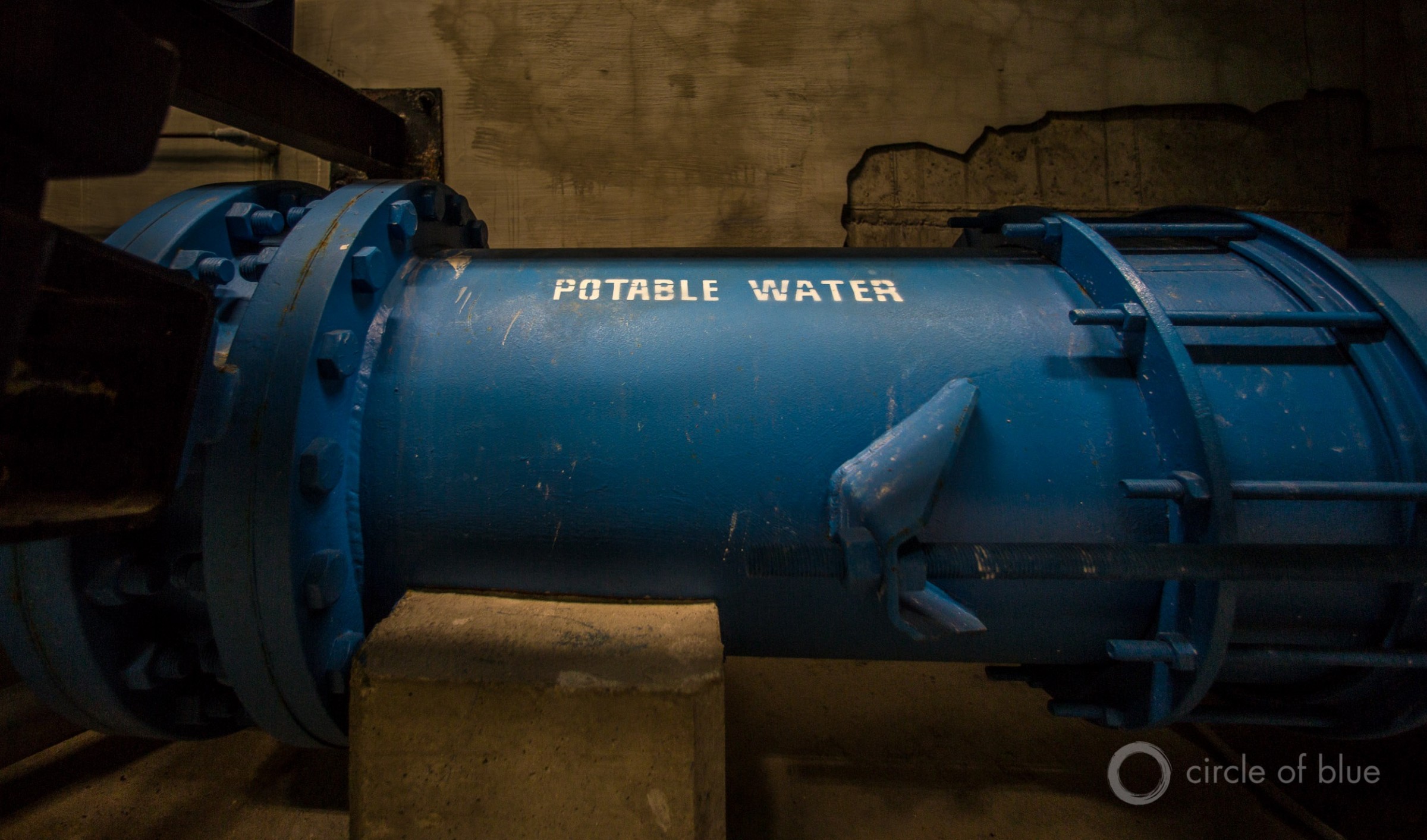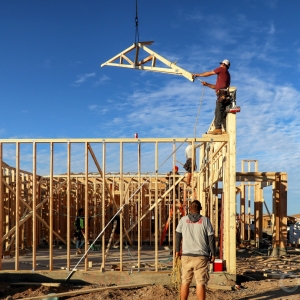The Stream, January 4, 2023 — Freezing Temperatures Across U.S. South Wreak Havoc on Water Systems

Distribution pipe at a water treatment plant. Photo © J. Carl Ganter/Circle of Blue
YOUR GLOBAL RUNDOWN
- An unseasonal arctic blast over the holiday season disrupted water access throughout the American South.
- Visitors to a ski resort in British Columbia are being asked to bring and ration their own water amid a record-low potable supply.
- A 2,000-year-old fountain in Turkey’s “City of Gladiators” is being restored to flow once again with fresh water.
- Ojibwe growers in the Great Plains and Midwest states confront climate change and other human-made challenges during their harvests of sacred wild rice.
An end-of-year, global UN report concludes that most countries are not on track to reach WASH sanitation targets by 2030.
“We are facing an urgent crisis: poor access to safe drinking water, sanitation, and hygiene claim millions of lives each year, while the increasing frequency and intensity of climate-related extreme weather events continue to hamper the delivery of safe WASH services.” — Dr. Tedros Adhanom Ghebreyesus, WHO director-general.
According to a joint report from the World Health Organization and United Nations, just 25 percent of countries are on track to reach their national WASH sanitation goals by 2030.
Most countries have been unable to overcome the impacts of climate change in delivering WASH systems. Only about one-third of countries monitor or provide specific WASH access to groups disproportionately affected by climate change, and one-third of countries do not use data to drive their WASH planning and resource allocation.
This double whammy — communities with both below-target sanitation systems experiencing the effects of extreme weather — illustrates how climate change affects vulnerable populations first, and hardest.
Sanitation, along with clean drinking water and hygiene, are the three pillars of WASH. The report also showed that 45 percent of countries are on track to meet their clean drinking water targets by 2030, but experts urged that acceleration is still needed on all three fronts.
— Christian Thorsberg, Interim Stream Editor
Recent WaterNews from Circle of Blue
- Federal Water Tap, January 2 — USGS Finds Steep Groundwater Declines in Rural Nevada
- What’s Up With Water, December 20 — Three stories from the United States on nitrate pollution, groundwater extraction, and drought response.
The Lead
The holiday season was marked by a winter storm that sent nearly every state into a cold plunge. In the American South, where extreme cold is an unusual event, temperatures dipped below freezing in Alabama, Louisiana, Mississippi, and South Carolina.
These unseasonal lows, especially in the Deep South, caused pipes to freeze, burst, and leak. Millions of liters of water, Al Jazeera reports, were spilled across the region. Over the Christmas weekend in Charleston, South Carolina, double the usual amount of water output was recorded — a result of leaks induced by cold temperatures. And in Jackson, Mississippi, Reuters reports dozens of burst pipes. Ahead of the new year, the city was again put under a boil-water notice.
In the coming days, another cold front threatens the South. A “multi-hazard” storm on Tuesday put much of Louisiana, Mississippi, and Alabama under flood and tornado watches, according to NOAA radar data.
This Week’s Top Water Stories, Told In Numbers
1,300
Years since water flowed from the fountain in Kibyra, an ancient settlement in southwest Turkey known as the “City of Gladiators.” The fountain, said to have been visited by both Hercules and the Greek god Dionysus, is nearly 30 feet tall and was built in 23 BC. A team of archaeologists worked for four months on its restoration, and soon it will flow again with fresh water, Anadolu Agency reports.
25 percent
Snowpack levels, compared to normal, in Mount Washington’s upper watershed in snowy British Columbia. The freshwater springs that supply an alpine ski resort are at a “record-low,” the Times-Colonist reports — as are the Puntledge River and Comox Lake Reservoir. The Campbell River Reservoir is also at a 40-year low. The resort’s challenges come at a time when winter sports are under serious threat from climate change.
On the Radar
More than a millennium ago, a series of prophecies and visions prompted the Ojibwe — who were living in the eastern region of what is now the United States — to move west, and settle in the Midwest and Great Plains. The promise of harvesting wild rice, known as manoomin, was central to this migration.
Today, wild rice remains the key crop for Ojibwe economies and many generational traditions, Indian Country Today reports. But harvesting the crop is increasingly difficult — growers continue to resist unpredictable seasons and weather, invasive species, and pollution.
More Water News
Many Little Dams: Small hydropower plants and fish farms in the Brazilian Amazon cumulatively have big impacts on diverse fish populations, and people, Mongabay reports.
Cape Cod: Replacing Massachusetts’ old septic systems, which contribute to the presence of algal blooms in warming waterways, comes at a cost: potentially pricing-out residents along Cape Cod, the New York Times reports.
Christian Thorsberg is an environmental writer from Chicago. He is passionate about climate and cultural phenomena that often appear slow or invisible, and he examines these themes in his journalism, poetry, and fiction.






Leave a Reply
Want to join the discussion?Feel free to contribute!